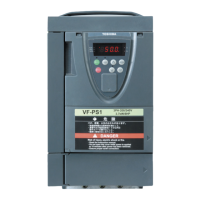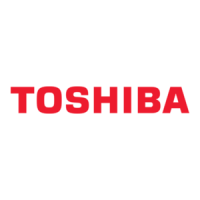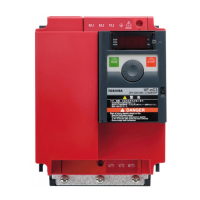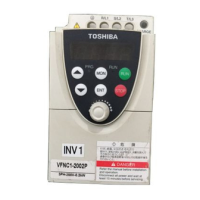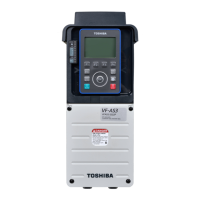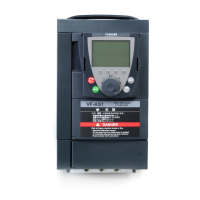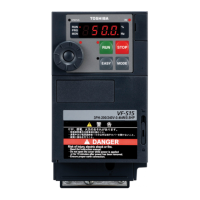E6581386
E-16
5
5.7 Manual torque boost–increasing torque boost at low speeds
: Manual torque boost 1
Output voltage
Base frequency voltage 1
[V]/[%]
Output frequency [Hz]
Base frequency
0
[Parameter setting]
Title Function Adjustment range Default setting
Manual torque boost 1 ~ % According to model Refer to page K-42.
This parameter is valid when
=
(Constant torque characteristics),
(square reduction torque),
(V/f 5-point
setting).
Note: The optimum value is programmed for each inverter capacity. Boosting torque excessively may cause the
inverter to trip because of an overcurrent. If operation is repeated with torque boosted excessively, electronic
devices in the main circuit may be damaged, so if high starting torque is needed, it is recommendable to use
vector control.
Refer to 5.6 selection 3) and 4).
If necessary, set the amount of torque to be boosted, as a guide, within +2% of the factory default setting.
5.8 Base frequency
: Base frequency 1
: Base frequency voltage 1
Note: This is an important parameter that determines the constant torque control area.
Output voltage
Base frequency voltage 1
[V]
Output frequency [Hz]
0
Base frequency
[Parameter setting]
Title Function Adjustment range Default setting
Base
frequency 1
~ Hz
Inverter with a model number ending with -WN:
-WP:
Base
frequency
voltage 1
200V class: ~ V
400V class: ~ V
200V models:
400V models:
Inverter with a model number ending with -WN:
-WP:
Note: The output frequency is limited to a frequency 10.5 times as high as the base frequency (). Even if the
maximum frequency () or the upper limit frequency () is set above this frequency, this limitation is
imposed on the output frequency.
• Function
If torque is inadequate at low speeds, increase torque by raising the torque boost rate with this parameter.
• Function
Sets the base frequency and the base frequency voltage in conformance with load specifications or the motor's
rated frequency.
